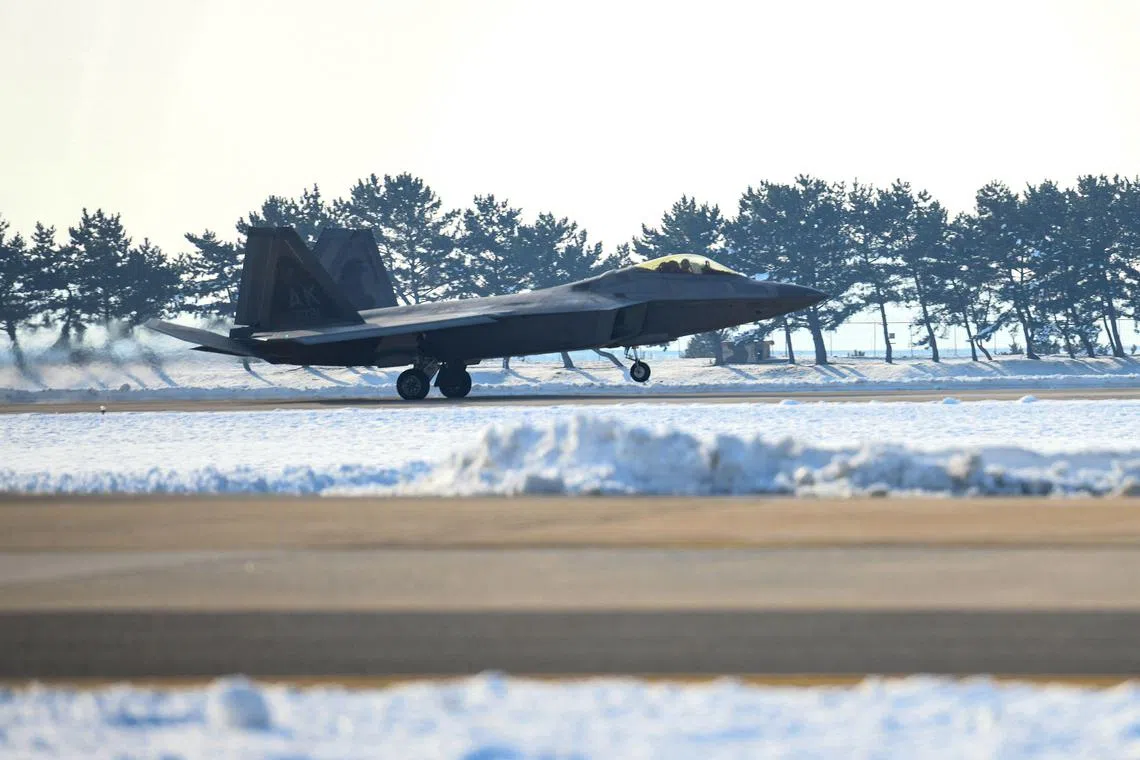US Chinese balloon takedown marks F-22 fighter jet’s first air-to-air strike
Sign up now: Get ST's newsletters delivered to your inbox

The F-22 Raptor fighter jet built by Lockheed Martin Corp first made its combat debut in 2015.
PHOTO: AFP
Follow topic:
WASHINGTON – The downing of China’s alleged spy balloon
“Shooting down China’s balloon was indeed the F-22’s first air-to-air kill,” said Dr Rebecca Grant, an Air Force systems specialist and president of Iris Independent Research, in an e-mail responding to questions. “Americans watched an unfriendly aircraft get shot down over our skies.”
Defence publication The War Zone said on its website that the incident “may be the highest altitude air-to-air kill ever”.
The F-22 was flying at about 58,000 feet (17,680m) off the South Carolina coast when it fired an Aim-9X Sidewinder missile at the balloon that was hovering at between 60,000 ft and 65,000 ft, the Pentagon said on Saturday.
The stealth fighter, built by Lockheed Martin, made its combat debut in 2015, nine years after it was deemed warfare-ready. It was used primarily to carry out guided air strikes against militant positions in Syria and Iraq.
The F-22 was best suited for the balloon mission because of its capability to operate effectively above 50,000 feet due to its engines’ power and design of the aircraft, said former deputy chief of staff for intelligence, surveillance and reconnaissance David Deptula, a retired lieutenant-general.
The Air Force touted the F-22’s success in those missions as vindication for a plane long criticised for its cost and the service’s failure to use it. The Pentagon spent US$67 billion (S$88 billion) to buy 187 of the supersonic jets.
The discovery and eventual downing of the Chinese balloon, which Beijing said was a climate research vehicle that drifted off course, injected new tensions into US-China relations.
The balloon saga comes less than three months after US President Joe Biden and his Chinese counterpart Xi Jinping agreed to resume talks in their first face-to-face meeting as leaders in Bali.
Defence Secretary Lloyd Austin said China was using the balloon in an attempt to surveil strategic sites in the continental US.
US officials expect to learn more about the balloon’s capabilities from a recovery operation under way off the coast. BLOOMBERG

